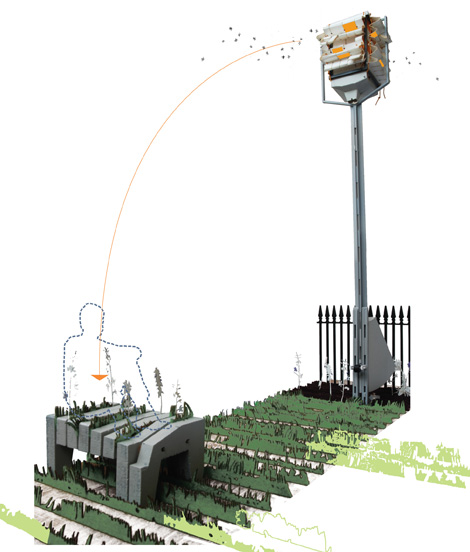
We seem to be displaying a growing fondness for bees here at DEVELOP3D, although we’re fans of all little urban critters, hence our sustained interest in the InMidtown Habitats competition.
Teams entering were briefed to create new designs for urban wildlife environments, and prototypes that could be reproduced across a whole district; fit into a business landscape and meet the criteria of an expert panel, including a bee-keeper, an ornithologist, a cost consultant and a bat-expert.
Bee hives, bat boxes, bird boxes and planters have all been presented before InMidtown, the business improvement district for Holborn, Bloomsbury and St Giles in Central London, and the final three designs will be exhibited at a public display in the courtyard at Central Saint Giles – the landmark multicoloured Renzo Piano building – from March to encourage feedback from local workers, residents and visitors.
Click through to pick your favourite from the three finalists:
Bee Lifts
[Main image]
Archmongers and Buchanan Partnership submitted a proposal called ‘Bee Lifts’, which incorporates folding arms that will hoist the hive up in the air. The pair hope that the hives will herald a new way of looking at the city, a phenomenon that they call ‘bee tourism’. Their design intends to meld with the design of both the city and nature by assimilating into urban scenery like a lamppost or sign post. Yet natural cycles of bee hibernation and plant seasons will bring these structures to life at certain times of the year. We see it as: Keeping the bees/humans out of harms way, while giving easy access to the beekeepers.

Habi-Sabi
Four designers from 51%, using recycled ‘Barsmark PT-200TM’ board, have named their easy assembly flat pack designs ‘Habi-Sabi’ after the Japanese concept of ‘Wabi Sabi’ – that a simple aesthetic grows stronger as the inessentials are stripped away. The idea is to create animal habitats that are fast, adaptable and metropolitan – echoing the very essence of the city. The design studio 51% specialises in projects on difficult sites, and has a background in designing urban bird nests and buildings that work in harmony with nature. We see it as: A wide range of different habitats, cheap and easy to build in all manner of different spaces.

b House, the Batwing and Metropollen planter
Landscape architect Jon Akers Coyle paired up with Growth Industry Ltd to propose their three aptly named designs: ‘b House’, ‘the Batwing’ and ‘Metropollen planter.’ The three origami themed steel structures combine a love of contemporary design and the ecological enhancement of the urban environment. Its designs work to help biodiversity re-colonise the capital by creating suitable living spaces in which both humans and bees, birds and bats dwell. We see it as: Batfink’s ideal hideout, while the beehives are a modern, aesthetically pleasing form.






